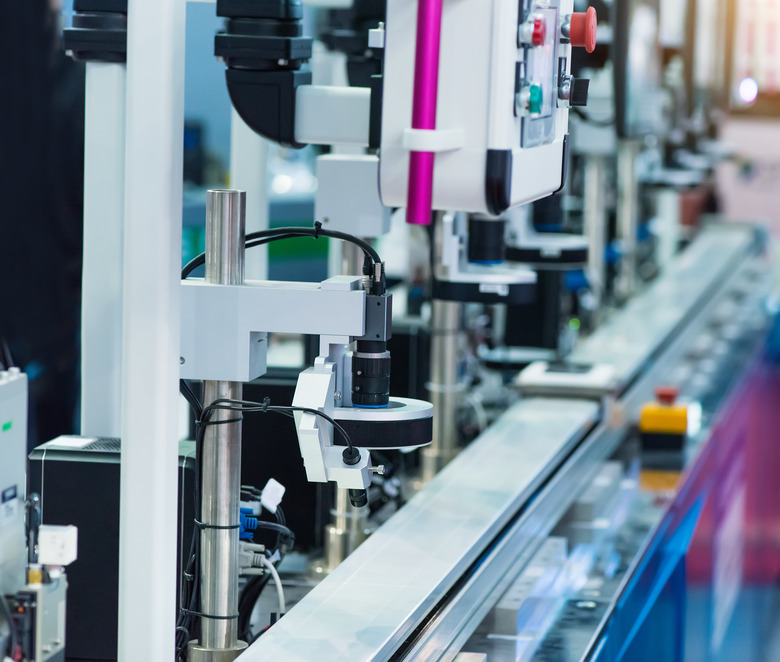The Main Parts Of A Robot
A robot is a machine that functions automatically and can adapt to changes in its environment. Although the word "robot" was first used in Czech writer Karl Capek's 1921 play, "Rossum's Universal Robots," human beings have been tinkering with machines that run without human guidance since the time of the Pharaohs. A staple of science fiction, robots are an increasingly important segment of our society, performing many jobs that are too dangerous or tedious for human beings.
Control System
Control System
At the most basic level, human beings and other animals survive through a principle called feedback. Human beings sense what is going on around them and react accordingly. The use of feedback to control how a machine functions dates back to at least 1745, when English lumber mill owner Edmund Lee used the principle to improve the function of his wind-powered mill. Every time the wind changed direction, his workers had to move the windmill to compensate. Lee added two smaller windmills to the larger one. These smaller windmills powered an axle that automatically turned the larger one to face the wind.
A robot's control system uses feedback just as the human brain does. However, instead of a collection of neurons, a robot's brain consists of a silicon chip called a central processing unit, or CPU, that is similar to the chip that runs your computer. Our brains decide what to do and how to react to the world based on feedback from our five senses. A robot's CPU does the same thing based on data collected by devices called sensors.
Sensors
Sensors
Robots receive feedback from sensors that mimic human senses such as video cameras or devices called light-dependent resistors that function like eyes or microphones that act as ears. Some robots even have touch, taste and smell. The robot's CPU interprets signals from these sensors and adjusts its actions accordingly.
Actuators
Actuators
To be considered a robot, a device must have a body that it can move in reaction to feedback from its sensors. Robot bodies consist of metal, plastic and similar materials. Inside these bodies are small motors called actuators. Actuators mimic the action of human muscle to move parts of the robot's body. The simplest robots consist of an arm with a tool attached for a particular task. More advanced robots may move around on wheels or treads. Humanoid robots have arms and legs that mimic human movement.
Power Supply
Power Supply
In order to function a robot must have power. Human beings get their energy from food. After we eat, the food is broken down and converted into energy by our cells. Most robots get their energy from electricity. Stationary robotic arms like the ones that work in car factories can be plugged in like any other appliance. Robots that move around are usually powered by batteries. Our robotic space probes and satellites are often designed to collect solar power.
End Effectors
End Effectors
In order to interact with the environment and carry out assigned tasks, robots are equipped with tools called end effectors. These vary according to the tasks the robot has been designed to carry out. For example, robotic factory workers have interchangeable tools such as paint sprayers or welding torches. Mobile robots such as the probes sent to other planets or bomb disposal robots often have universal grippers that mimic the function of the human hand.
References
- "Robo Info"; J. Jill Rogers and M. Anthony Lewis, PhD; 2004
- Razor Robotics: All About Robots
Cite This Article
MLA
III, Frank B. Chavez. "The Main Parts Of A Robot" sciencing.com, https://www.sciencing.com/main-parts-robot-7403157/. 13 March 2018.
APA
III, Frank B. Chavez. (2018, March 13). The Main Parts Of A Robot. sciencing.com. Retrieved from https://www.sciencing.com/main-parts-robot-7403157/
Chicago
III, Frank B. Chavez. The Main Parts Of A Robot last modified August 30, 2022. https://www.sciencing.com/main-parts-robot-7403157/
